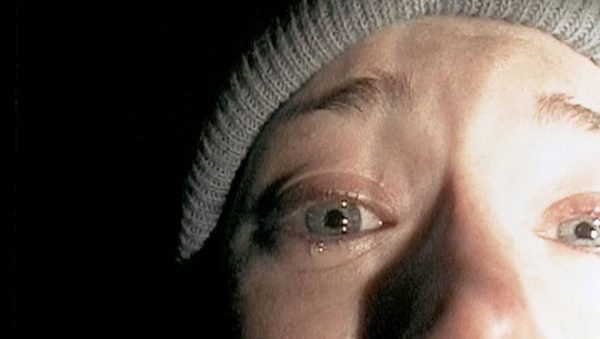The Found Footage Phenomenon, 2021.
Written and directed by Sarah Appleton and Phillip Escott.
Featuring André Øvredal, Patrick Brice, Ruggero Deodato, Eduardo Sánchez, and Stephen Volk.
SYNOPSIS:
An independent documentary charting the origins of the found footage subgenre, tracking it through to the technique’s current form and asking what the future is.

No subgenre has dominated the last 20-something years of horror more than found footage – for better and, in the minds of some, often for worse.
Sarah Appleton and Phillip Escott’s fittingly unvarnished new documentary The Found Footage Phenomenon offers up a densely-packed primer on the subgenre, tracing its origins through to its most mainstream figurehead staples, while intelligently theorising on its enduring popularity.
There’s no denying that found footage is best defined by mammoth commercial hits like The Blair Witch Project and Paranormal Activity, but rather than spend time trawling back over trivia and factoids you already know, there’s a far greater focus here on the philosophical and pragmatic reasons behind the genre’s success.
Speaking to a wide variety of both found footage filmmakers and experts, Appleton and Escott create a lucid picture of the confluence of circumstances which allowed the artistic “movement” to bloom – namely the increasing portability and affordability of camera technology and the mainstream uptake of the Internet democratising the means of movie production.

Though most early found footage films were technically low-slung compared to the horror output of major Hollywood productions, the rough-hewn presentation also brought with it an intimacy that “proper” movies simply couldn’t match.
And while many of the filmmakers interviewed cite the low costs of found footage as their primary impetus for choosing the style, there’s also a common thread that making a quality found footage movie is much harder than it looks, despite the popular conception that they’re relatively easy to throw together. Beyond affirming the plausibility of camera placement and characters continuing to record even during dire circumstances, it’s a genre which, within years of its boom period, had seemingly milked itself free of most fresh ideas.
These intimate, honest interviews are combined with a broader sweep across the genre’s wider pop-culture touchstones, from the influence of Bram Stoker’s epistolary novel Dracula to Orson Welles’ infamous 1938 radio dramatisation of The War of the Worlds, before leaping off to pay tribute to seminal found footage texts.
The real coup here is in speaking to so many leading filmmakers in the field; Cannibal Holocaust, Ghostwatch, The Last Broadcast, The Blair Witch Project, Noroi: The Curse, Lake Mungo, [REC], Paranormal Activity, Trollhunter, Afflicted, Creep, and Host are all enthusiastically represented by their respective personnel, who lend context to their movie’s creation and how it fits into the larger “canon” of found footage fare.

The stories therein, of the genre from both a practical and business perspective, lend fresh insight to a mode of filmmaking often derided for its ability to let anyone with a camera make a movie. Yet in an age where anyone can self-publish high-quality video online, it only seems even more fiercely ahead of its time.
A more critical perspective re: the genre’s limitations would’ve been welcome here, though the doc certainly avoids being a puff-piece, especially with numerous interviewees rightly noting found footage’s tendency to slide in and out of fashion over the years. Right now we’re at a bit of a nadir for quality, creative entries into the subgenre, though this doc serves as a thoughtful reminder of why it can be such a uniquely enjoyable and scary delivery medium.
The simple conception of the documentary belies the incredible access the filmmakers have been given to many of the most vital voices in the found footage movement. The result is a doc equal-parts educational and entertaining.
Flickering Myth Rating – Film: ★ ★ ★ ★ / Movie: ★ ★ ★ ★
Shaun Munro – Follow me on Twitter for more film rambling.











